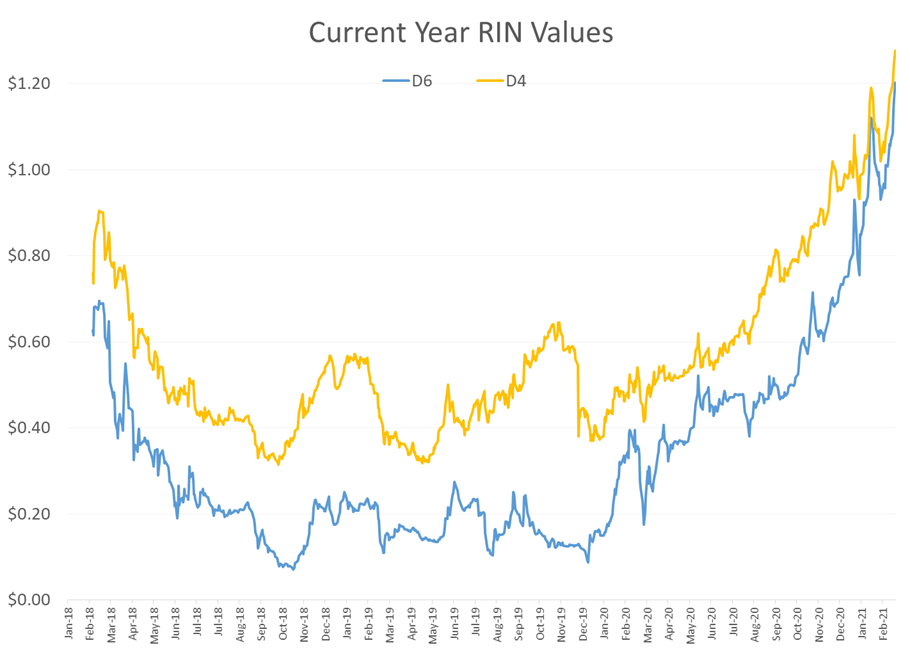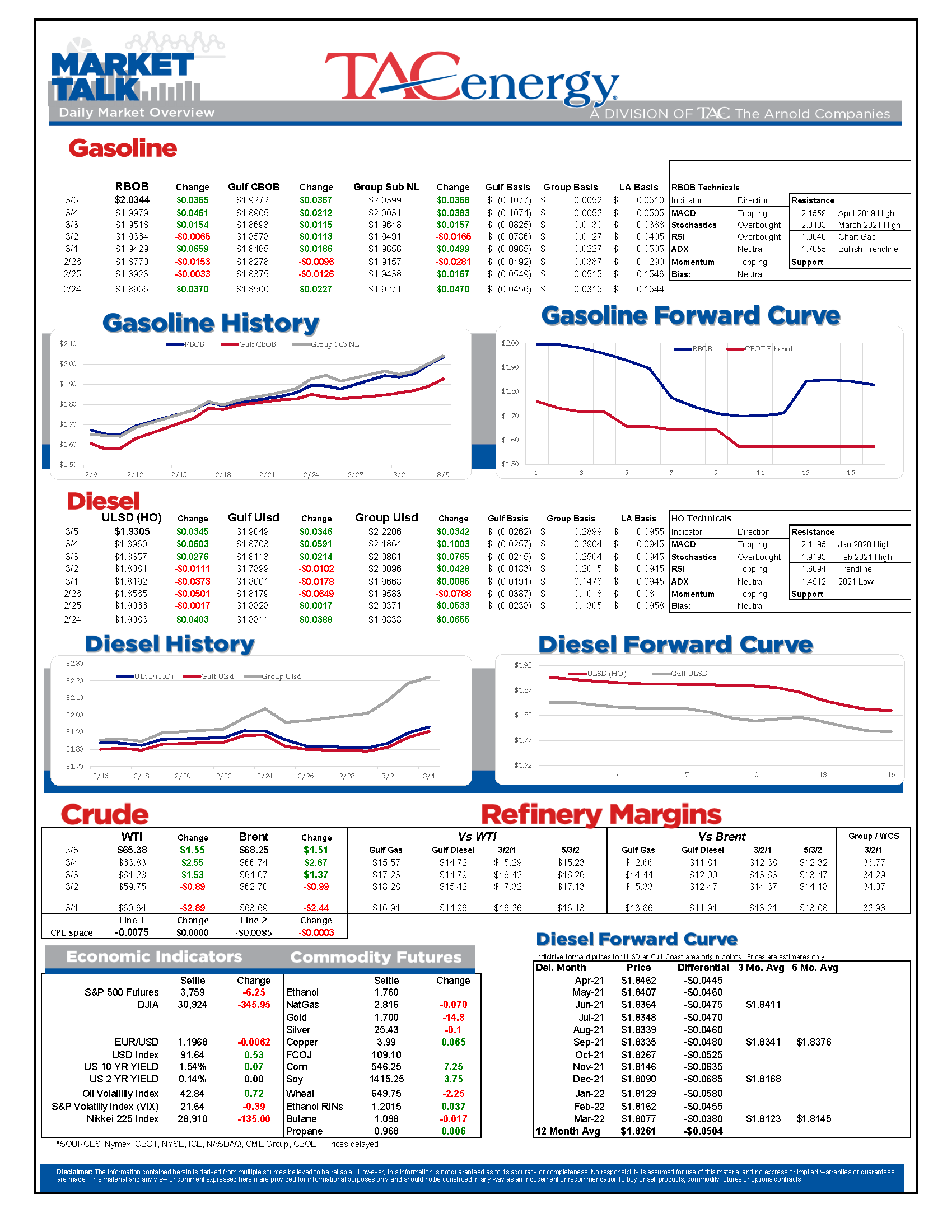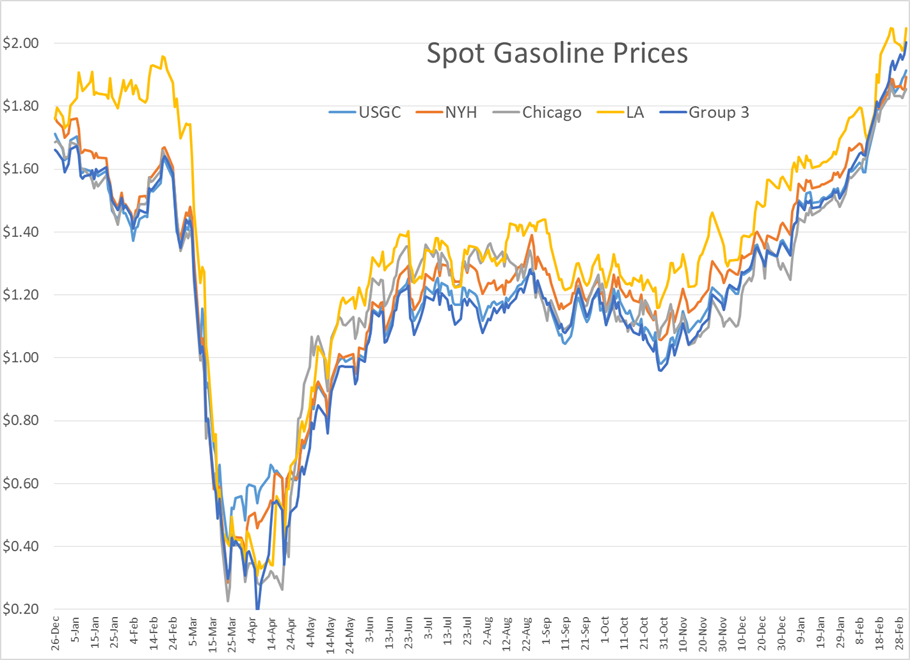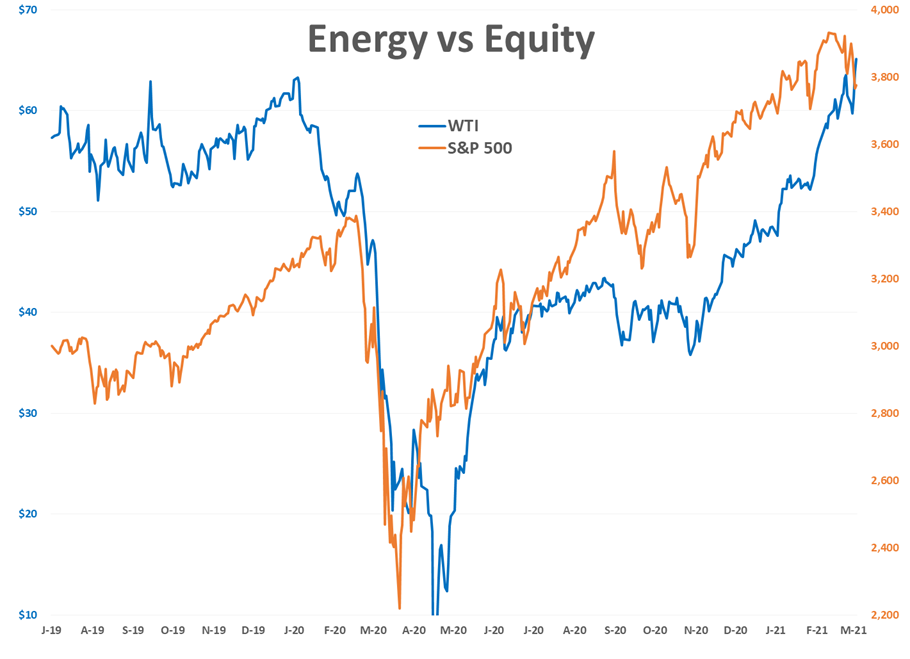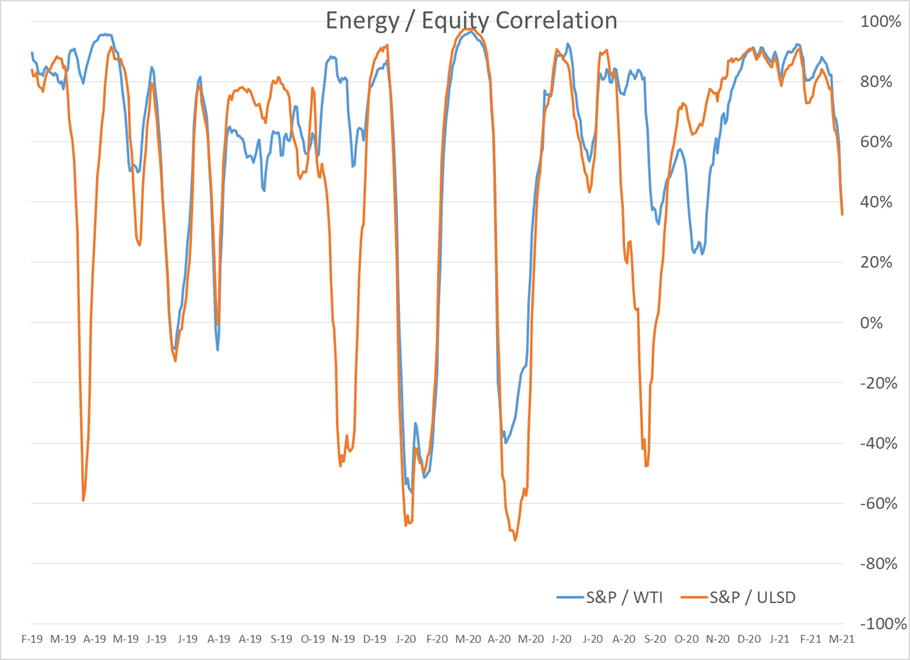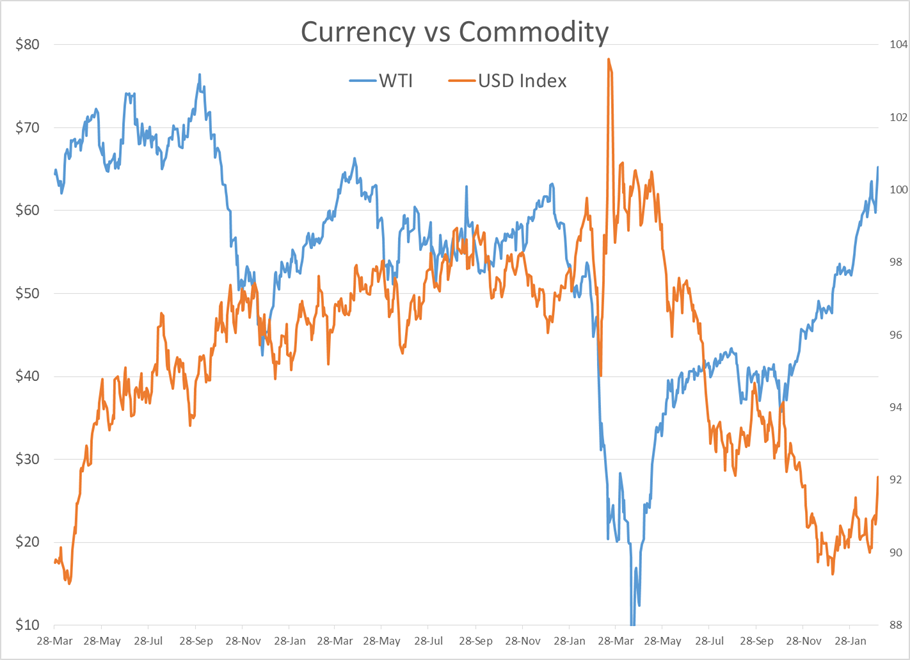Many In The Market Caught Off-Guard

Oil prices have spiked $5 a barrel, and refined products are up 12 cents/gallon since early Thursday morning after OPEC & friends announced they would not change their output cut agreement, which caught many in the market off-guard. The rally has propelled each of the big 4 petroleum futures contracts to their highest levels in more than a year, just a couple of days after it looked like the four month old trend might be breaking down.
The big rally in energy contracts comes in spite of a large selloff taking place in equity markets, which continue to act spooked by interest rates higher than 1%. You can make a strong argument that the two agencies most capable of moving energy prices with their policy are OPEC and the U.S. Federal reserve. Yesterday, we saw both in action with OPEC surprising the market to the upside, while the FED Chair apparently didn’t do enough to calm the stock markets. Given the two asset classes have had a strong positive correlation for most of the past year, this recent divergence could end up creating more volatility for energy contracts in the weeks to come, while a strong rally in the U.S. Dollar could finally pop the energy balloon.
Looking past the headlines of the OPEC announcement, there is some reason to pause given that the Saudi’s are still not convinced demand globally is capable of handling normal production levels. Then again, there is certainly a political angle to everything the cartel does, and it’s also possible that the U.S. reaction (or what critics call a lack of reaction) to the Saudi leadership’s role in the killing of Jamal Khashoggi could have played into this decision as well. A Bloomberg note this morning suggests that the move by the Saudi’s is a bet that U.S. oil producers will behave differently this time, even though they’ve behaved the same way for the past 150 years which has helped create the epic boom and bust cycles this market is famous for.
The refinery recovery efforts continue to progress with additional units coming online daily, but hiccups are common, and re-supply is not coming fast enough for those still scrambling to find allocation across Texas and neighboring states. The impacts on rack prices are spread much further however with markets from Arizona to Virginia all feeling the trickle down impacts of the heart of refining country shutting down for two weeks. Group 3 diesel differentials continue to stand out, spiking to premiums north of 30 cents Thursday morning before trading lower to end the day. That market has 20 cents of backwardation between now and the end of March, as traders bet that resupply should largely be complete by April, even though supplies continue to tick lower in the region this week.
Chicken or the egg: RIN values continue to set new multi-year highs this week, which is either helping drive the rally in refined products, or being driven by that rally depending on who you ask. There’s little news over the RFS program or the various legal challenges to it, and grain prices have been fairly flat, so it seems this rally could simply be the market betting that this new administration is unlikely to do anything that would help lower this de-facto tax on refiners.
Click here to download a PDF of today's TACenergy Market Talk.
News & Views
View All
Energy Futures Are Caught Up In Headline Tug-O-War This Morning
Energy futures are caught up in headline tug-o-war this morning with Canadian oil production concerns and a positive US GDP report trying to push prices higher while sinking Chinese demand worries and Gaza ceasefire hopes are applying downward pressure. The latter two seem to be favored more so far this morning with WTI and Brent crude oil futures down ~45 cents per barrel, while gasoline and diesel prices are down about half a cent and two cents, respectively.
No news is good news? Chicago gasoline prices dropped nearly 30 cents yesterday, despite there not being any update on Exxon’s Joliet refinery after further damage was discovered Wednesday. Its tough to say if traders have realized the supply situation isn’t as bad as originally thought or if this historically volatile market is just being itself (aka ‘Chicago being Chicago’).
The rain isn’t letting up along the Texas Gulf Coast today and is forecasted to carry on through the weekend. While much of the greater Houston area is under flood watch, only two refineries are within the (more serious) flood warning area: Marathon’s Galveston Bay and Valero’s Texas City refineries. However, notification that more work is needed at Phillip’s 66 Borger refinery (up in the panhandle) is the only filing we’ve seen come through the TECQ, so far.
Premiums over the tariff on Colonial’s Line 1 (aka linespace value) returned to zero yesterday, and actually traded in the negatives, after its extended run of positive values atypical of this time of year. Line 1’s counterpart, Line 2, which carries distillates from Houston to Greensboro NC, has traded at a discount so far this year, due to the healthy, if not over-, supply of diesel along the eastern seaboard.
Click here to download a PDF of today's TACenergy Market Talk.

WTI And Brent Crude Oil Futures Are Trading ~$1.50 Per Barrel Lower In Pre-Market Trading
The across-the-board drawdown in national energy stockpiles, as reported by the Department of Energy yesterday, stoked bullish sentiment Wednesday and prompt month gasoline, diesel, and crude oil futures published gains on the day. Those gains are being given back this morning.
The surprise rate cut by the People’s Bank of China is being blamed for the selling we are seeing in energy markets this morning. While the interest rate drop in both short- and medium-term loans won’t likely affect energy prices outright, the concern lies in the overall economic health of the world’s second largest economy and crude oil consumer. Prompt month WTI and Brent crude oil futures are trading ~$1.50 per barrel lower in pre-market trading, gasoline and diesel are following suit, shaving off .0400-.0450 per gallon.
Chicagoland RBOB has maintained its 60-cent premium over New York prices through this morning and shows no sign of coming down any time soon. Quite the opposite in fact: the storm damage, which knocked Exxon Mobil’s Joliet refinery offline on 7/15, seems to be more extensive than initially thought, potentially extending the repair time and pushing back the expected return date.
There are three main refineries that feed the Chicago market, the impact from one of them shutting down abruptly can be seen in the charts derived from aforementioned data published by the DOE. Refinery throughput in PADD 2 dropped 183,000 barrels per day, driving gasoline stockpiles in the area down to a new 5-year seasonal low.
While it seems all is quiet on the Atlantic front (for now), America’s Refineryland is forecasted to receive non-stop rain and thunderstorms for the next four days. While it may not be as dramatic as a hurricane, flooding and power outages can shut down refineries, and cities for that matter, all the same, as we learned from Beryl.

